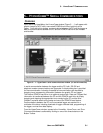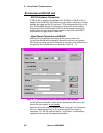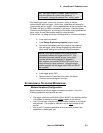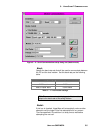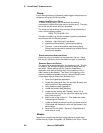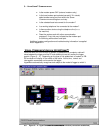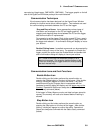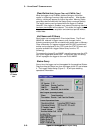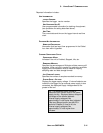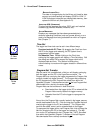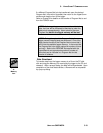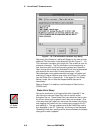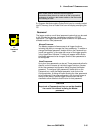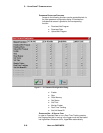
5... HYPERCOMM™ COMMUNICATIONS
USING THE OMP-MODL 5-9
connects (eg HyperLogger, OMP-MODL, OMP-MNL). The logger graphic on the left
side of the HyperComm Window portrays the model detected.
Communication Techniques
Visual communication has been designed into the HyperComm Window
allowing for intuitive mouse driven communication. Two methods are used
for communicating commands between the PC and the logger:
Drag and Drop of Icons: Icons representing various types of
information are overlayed on the PC and logger graphics. By
dragging and dropping these icons between the PC and the logger,
data communication is implemented.
For example, to set the logger Clock to the current PC time, merely
click and hold on the Clock Icon overlaying the PC, drag it over the
the logger and release it. A confirmation dialog will display to insure
your actions.
Double-Clicking Icons: Immediate commands can be executed by
double-clicking on many of the icons. For example, to Enable the
logger, position the cursor over the Enable Button and double-click
and a confirmation dialog will display to insure your actions.
TIP: Some of the icons can be double-clicked on as a
short-cut command. For example, double-clicking on the
Clock Icon overlaying the logger allows for directly setting
the clock via text entry.
Communication Icons and their Functions
Enable Button Icon
Double-clicking on this button performs the same function as
pressing the Enable button on the front of the logger. After double-
clicking, a dialog will appear to confirm the action. If any error
conditions exist (eg the Program Net is incompatible with the
hardware) a warning dialog will display and the logger may not be
Enabled. Operational Status can always be confirmed with the
Status Query command (below).
If the logger is Rotary Memory mode, and data has been stored to
memory, the memory will have to be cleared before Enabling is
allowed.
Stop Button Icon
Double-clicking on this button performs the same function as
pressing the Stop button on the front of the logger. After double-
clicking, a dialog will appear to confirm the action. Operational
Status can always be confirmed with the Status Query command
(below).



